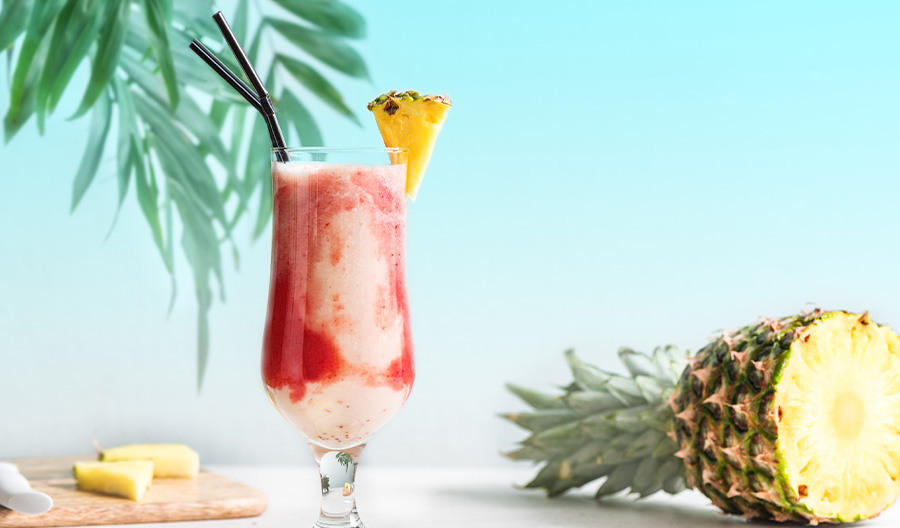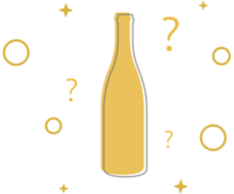As cocktail culture evolves, so do our feelings about frozen drinks.
While they formerly were most often associated with bottom-shelf booze and blurry vacation snaps, the category of frozen cocktails, whether made with an industrial-grade machine or a blender, now also includes higher-concept concoctions and quality ingredients. To make a good frozen cocktail requires careful attention to their all-too-fleeting consistency and carefully balanced flavor.
If you decide to put a frozen drink on your menu, there are countless variables to consider. In all circumstances, you’ll need to keep ABV, dilution, and texture at the top of your mind. But the first decision to make is the method you’ll use.
How to Make Frozen Cocktails: Three Methods
Arguably the most straightforward way to transform a traditional cocktail into a frozen one is to simply combine your ingredients in a blender with crushed (not cubed) ice, and then pulse.
There are drawbacks to this method, though. The agitation of a blender contributes to ice melt, so these drinks must be prepared and served quickly. It’s also difficult to scale this method for high-volume use in a bar, and it doesn’t produce the most consistent results: blend for too long a time, and you’ll end up with a watery drink, explains Camille Wilson, the founder of The Cocktail Snob, too short, and you’ll have ice chunks in your glass. Also, blenders don’t do well with single servings of drinks, so you’ll need to make at least two servings at a time.
Alternatively, you can freeze prediluted cocktail components in Ziploc bags or other freezer-safe containers, and then, when it’s time to serve, either pulse in a blender or shake vigorously to break up the solids.
An additional option is to batch drinks and use a professional-grade slushy machine. These run the gamut of price, power, and effectiveness. For a few hundred dollars, you can purchase a countertop appliance that consists of a clear plastic container with a removable top and one freezing cylinder down the middle. For a few thousand, you can buy a machine with insulated walls, freezing cylinders throughout, and customizable settings and timers. When evaluating options, you’ll want to consider the availability of service professionals for any needed repairs.
Another consideration with any appliance is its location within your bar. It should be easy for your team to get to the slushy machine from a freezer, because that’s where all the batched ingredients for the machine must be stored. If you keep those ingredients in a refrigerator, it will take far longer to get the drink to its desired consistency, and during that time you’ll be unable to serve guests.
Adjusting the ABV
In a conventional cocktail, spirits serve a purpose beyond boosting the ABV. They add flavor and texture, and they form the structural backbone of a drink. Alcohol has a much lower freezing temperature than water does, however, meaning it won’t freeze in a standard freezer, and a boozy frozen drink will go from slushy to soupy especially quickly.
To combat that, when creating a frozen cocktail, you’ll want to lower the drink’s alcoholic component below what it would be in a “standard” drink—aim for an ABV of about 10%, with an absolute maximum of 15%. To get it to this lower point, you can either cut back on the quantity of spirits in the drink and/or increase the proportion of low-proof or nonalcoholic ingredients.
Cocktails that are ordinarily shaken, such as margaritas, daiquiris, and other fruit-juice-containing drinks, are particularly well suited for translating to the frozen format. Their sugar and acid components add flavor and texture to the mix and bump down the ratio of alcohol to other ingredients.
To make frozen versions of spirit-forward cocktails like old fashioneds or negronis, you might add a low-ABV or nonalcoholic ingredient such as amaro or even orange juice to the recipe.
Formulating the Flavor and Revising Recipes
Once you’ve selected a method of making the drink and have the ABV dialed in, balancing the flavors of frozen cocktails becomes the primary consideration.
Temperature affects taste perception: The colder something is, the less pronounced the flavors will be.
Sweetness and bitterness are especially difficult to discern at cold temperatures, which needs to be taken into consideration when formulating a frozen drink’s recipe.
Sweetener plays multiple roles in frozen drinks, too. In addition to balancing a frozen cocktail’s bitter and acidic elements—and you’ll need more of the sweet element than usual to do so—it can help maintain frozen drinks’ texture. Drinks that are anti-frozen with sugar stay slushy a lot longer than drinks that are anti-frozen with alcohol. What most people with a slushy machine do is they lower the alcohol content to, say, below 8%, and they jack the sugar content up to 12% to 14%. Those drinks you’re pulling from the machine are much lower in alcohol and much higher in sweetness.
You don’t want to overdo it, though: As with a standard cocktail, balance is crucial. Another reason why drinks like the Margarita and the Daiquiri work so well in a frozen format is that they combat the extra sweetness with acidity, ensuring the drink stays balanced. When adapting cocktails like these to a frozen format, aim to use about 50% more sweetener than you normally would. Some drinks pros even recommended doubling it.To avoid a drink that tastes like sugar water as it comes to temperature, adjust your alcohol and acid balance. Most of these things can be rejiggered to get them where you need them to be.
Calculating Dilution
The speed at which ice melts, and how it affects the taste and texture of a drink, is important in a “standard” cocktail—consider the rise of supersized ice cubes—but is especially crucial in frozen cocktails.
In a conventional cocktail, the recommended dilution varies between approximately 15% and 25%. In a frozen drink, however, you’ll want to aim for about twice that, incorporating nearly as much ice or water as the drink’s other ingredients.
Unlike with a standard cocktail, where the dilution primarily takes place when the drink is being shaken or stirred, the dilution of a frozen cocktail needs to be calculated in advance. This means water should be added before you throw the mix into a slushy machine or freezer-safe container or Ziploc. If you’re making the drink with a blender, the measure of crushed ice should be included in your specs.
Plus, if you’re using a blender, minimize ice melt by getting your ingredients as cold as possible before mixing. This means keeping spirits in the freezer and other ingredients in the refrigeration until it’s time to use them.
Above all, remember that experimentation is part of every cocktail program, and you can rejigger your specs to transform almost any traditional cocktail into a frozen format.


